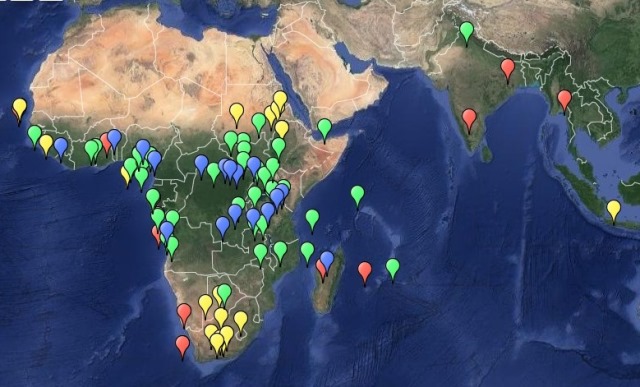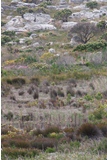Weaver news
|
| Country | n | Country | n | |
| Angola | 15 | Sierra Leone | 2 | |
| South Africa | 15 | Indonesia | 1 | |
| Tanzania | 8 | Nepal | 1 | |
| Senegal | 8 | Thailand | 1 | |
| Kenya | 7 | Gabon | 1 | |
| Cameroon | 7 | Equatorial Guinea | 1 | |
| Ethiopia | 5 | Zambia | 1 | |
| Sudan | 5 | Eritrea | 1 | |
| Uganda | 5 | Somalia | 1 | |
| Congo, DR | 4 | South Sudan | 1 | |
| Madagascar | 4 | Comoros | 1 | |
| Sao Tome & Principe | 4 | Namibia | 1 | |
| India | 3 | Benin | 1 | |
| Ghana | 3 | Cote d'Ivoire | 1 | |
| Malawi | 2 | Gambia | 1 | |
| Mauritius | 2 | Liberia | 1 | |
| Seychelles | 2 | Nigeria | 1 |
Illustration

Red - weavers described from 1758 to 1799.
Yellow - weavers described from 1800 to 1849.
Green - weavers described from 1850 to 1899.
Blue - weavers described from 1900 to 1999.
NOTE: Google has shifted all points slightly to the west when coloured icons are used. Thus the southern most red point (Yellow Bishop) should be moved to the right to locate on the Cape Peninsula. All other markers should be shifted by the same amount to the right.
This figure shows that the earliest weavers (Red on map) to be described were collected on the west coast of Africa, 2 Indian Ocean islands, and Asia. During the early 1800s (Yellow on map) new weavers were collected on the west African coast, southern Africa (coast and inland), Ethiopia to Sudan, and 1 in Asia. During the late 1800s (Green on map) new weavers were collected mostly in tropical Africa from west to east, on Indian Ocean islands, and 1 in Asia. During the 1900s (Blue on map) new weavers were collected mostly in tropical Africa, and 1 in Madagascar.












